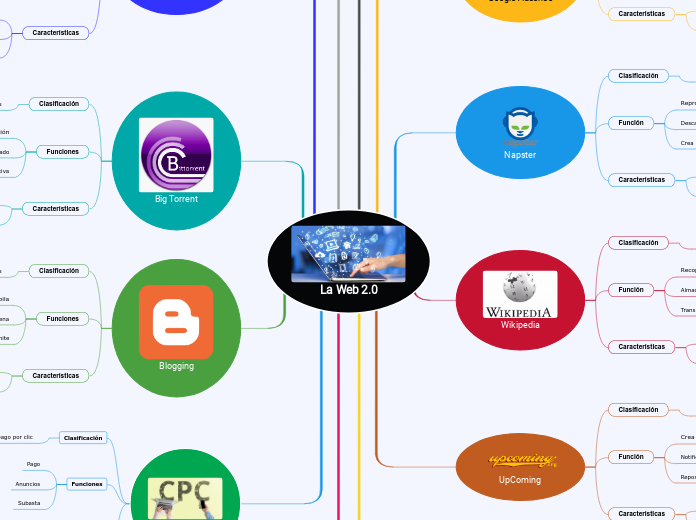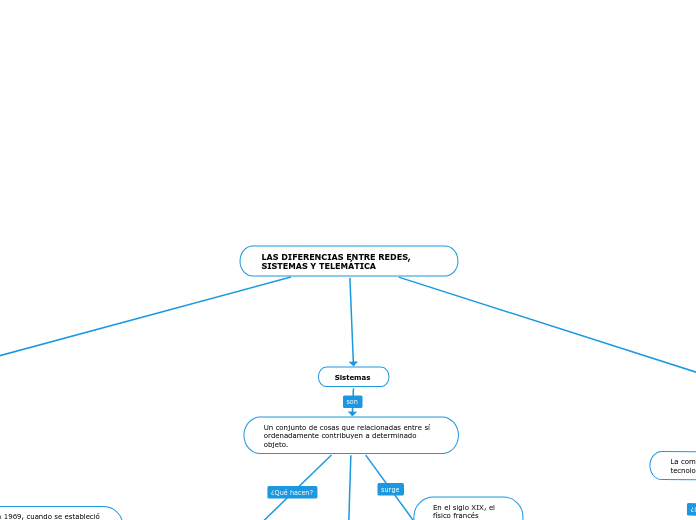La Web 2.0
The Solar System is the gravitationally bound system of the Sun and the objects that orbit it, either directly or indirectly. Of the objects that orbit the Sun directly, the largest are the eight planets, with the remainder being smaller objects, the dwarf planets, and small Solar System bodies.
Tagging
Rápida implementación
Mayor velocidad de carga
Organiza
Dirige mensaje especificos
Diferencia gustos
Agrupa segmentos
Identifica e individualiza (Gestor de etiquetas)
Cost per Cick
Precio máximo
Precio fijo
Paga el anunciante
Subasta
Anuncios
Pago
Oferta de pago por clic
Blogging
Saturn is known most for its rings.
Galileo Galilei first thought it was an object with three parts: a planet and two large moons on either side.
Not knowing he was seeing a planet with rings, the stumped astronomer entered a small drawing — a symbol with one large circle and two smaller ones — in his notebook.
The rings are made of ice and rock and scientists are not yet sure how they formed. The gaseous planet is mostly hydrogen and helium.
How long does it take for Saturn to go around the sun?
Genera Ventas
Atrae Trafico
A planet's day is the time it takes the planet to rotate or spin once on its axis.
Write down Saturn's day measured in Earth days.
Publicación de contenidos
Big Torrent
Uranus is an oddball. It has clouds made of hydrogen sulfide, the same chemical that makes rotten eggs smell so foul.
It rotates from east to west like Venus. Its tilt causes extreme seasons that last 20-plus years, and the sun beats down on one pole or the other for 84 Earth-years at a time.
Methane in the atmosphere gives Uranus its blue-green tint. It also has 13 sets of faint rings.
How long does it take for Uranus to go around the sun?
Rápido
Ligero
A planet's day is the time it takes the planet to rotate or spin once on its axis.
Write down Uranus's day measured in Earth days.
Descarga Selectiva
Filtrado
Priorización
Intercambio de archivos
Flickr
Neptune is about the size of Uranus and is known for supersonic strong winds.
Neptune is far out and cold.
The planet is more than 30 times as far from the sun as Earth.
Neptune was the first planet predicted to exist by using math, before it was visually detected. Neptune is about 17 times as massive as Earth and has a rocky core.
How long does it take for Neptune to go around the sun?
Recibe HD
Ilimitado en Cantidad
Ilimitadas en Cargas
Funciones
A planet's day is the time it takes the planet to rotate or spin once on its axis.
Write down Neptune's day measured in Earth days.
Compartir
Vender
Buscar
Ordenar
Almacenar
fotografías o vídeos en línea
Operaciones
It was once considered a planet but in August 2006 the International Astronomical Union (IAU) downgraded the status of Pluto to that of “dwarf planet.”
Pluto is unlike other planets in many respects. It is smaller than Earth's moon; its orbit is highly elliptical.
It's a cold, rocky world with a tenuous atmosphere. Pluto is a very active ice world that's covered in glaciers, mountains of ice water, icy dunes, and possibly even cryovolcanoes that erupt icy lava made of water, methane or ammonia.
Cliente a Cliente
The dwarf planet Pluto has five moons.
Name these moons.
Moon name
Publicaciones personales
A planet's day is the time it takes the planet to rotate or spin once on its axis.
Write down Pluto's day measured in Earth days.
Redes sociales
How long does it take for Pluto to go around the sun?
How many days
Apliaciones a la medida
Topic principal
Abiertos
No se revisa
Lenguaje Simple
Comparte contenido
Aportes en comunidad
Creación de paginas
Creación colectiva de documentos
UpComing
Jupiter is a giant gas world that is the most massive planet in our solar system.
Its swirling clouds are colorful due to different types of trace gases.
And a major feature in its swirling clouds is the Great Red Spot, a giant storm more than 10,000 miles wide. It has raged at more than 400 mph for the last 150 years, at least.
Jupiter has a strong magnetic field, and with 75 moons, it looks a bit like a miniature solar system.
How long does it take for Jupiter to go around the sun?
Lo compra yahoo.
Abierto
A planet's day is the time it takes the planet to rotate or spin once on its axis.
Write down Jupiter's day measured in Earth days.
Repositorio
Notifica
Calendario de eventos sociales
Wikipedia
Mars is a cold, desert-like place covered in dust. This dust is made of iron oxides, giving the planet its iconic red hue.
Mars shares similarities with Earth: It is rocky, has mountains, valleys and canyons, and storm systems ranging from localized tornado-like dust devils to planet-engulfing dust storms.
How long does it take for Mars to go around the sun?
Edición libre
Contenido Abierto
A planet's day is the time it takes the planet to rotate or spin once on its axis.
Write down Mars's day measured in Earth days.
Transmite
Almacena
Recopila
Enciclopedia
Napster
Earth is a water world, with two-thirds of the planet covered by oceans.
It's the only world known to harbor life.
Earth's atmosphere is rich in nitrogen and oxygen.
Its name originates from 'Die Erde,' the German word for 'the ground.'
Earth may once have had two moons, nowadays it has just one.
How long does it take for Earth to go around the sun?
Sin intermediarios
Red P2P
A planet's day is the time it takes the planet to rotate or spin once on its axis.
Write down the Earth's day in hours.
Crea
Descarga
Reproduce
Streaming de música
Google Adsense
Venus is Earth's twin in size and has no moons.
Its surface has various mountains and volcanoes. Because of its thick, toxic atmosphere that's made of sulfuric acid clouds, Venus is an extreme example of the greenhouse effect. The average temperature on Venus' surface is 900 F (465 C).
Venus spins slowly from east to west, the opposite direction to most of the other planets.
The Greeks believed Venus was two different objects — one in the morning sky and another in the evening. Because it is often brighter than any other object in the sky, Venus has generated many UFO reports.
Características
A planet's day is the time it takes the planet to rotate or spin once on its axis.
Write down Venus's day measured in Earth days.
Gratuita
Sencilla
Función
Contenido Online
Obtener ingresos
Clasificación
How long does it take for Venus to go around the sun?
Publicidad en línea
Permiten
Mercury is the smallest, only a little bit larger than Earth's moon. Mercury has no moon.
It experiences dramatic changes in its day and night temperatures: Day temperatures can reach a scorching 840 F (450 C), which is hot enough to melt lead. Meanwhile, on the night side, temperatures drop to minus 290 F (minus 180 C).
It also has a very thin atmosphere of oxygen, sodium, hydrogen, helium, and potassium and can't break-up incoming meteors, so its surface is pockmarked with craters, just like the moon.
A la persona
How long does it take for Mercury to go around the sun?
Desarrollar competencias
Crear contenidos
Mejor interacción
A planet's day is the time it takes the planet to rotate or spin once on its axis.
Write down Mercury's day measured in Earth days.
How many Earth days
Mayor acceso a información
Our Solar System has eight “official” planets which orbit the Sun.
Each planet is at a different distance from the sun. Name its position.
Position









